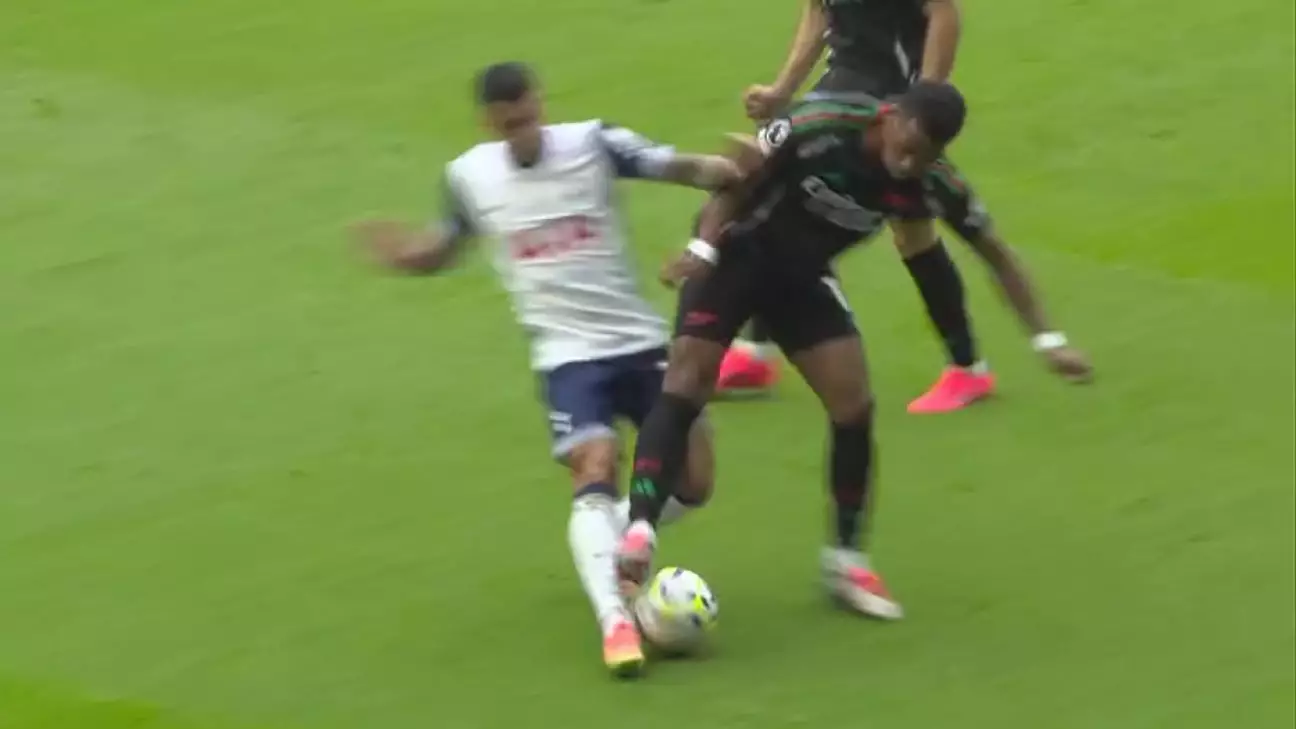The implementation of the Video Assistant Referee (VAR) in the Premier League was heralded as a significant advancement in ensuring fairness in the game. However, each week seems to bring fresh controversies that challenge the integrity and clarity of VAR decisions. This article delves into the procedural intricacies behind VAR decisions in recent matches, examining specific incidents to understand whether the calls made were justified and how they align with the laws governing football.
In a recent match, Arsenal’s Jurriën Timber was penalized with a yellow card following a challenge on Pedro Porro. As VAR reviewed the incident, referee Jarred Gillett’s decision was upheld, raising questions about the consistency of VAR interventions. Much controversy surrounded the incident due to a similar scenario involving Curtis Jones last season. In that case, Jones was sent off for a challenge deemed reckless after a VAR review.
What distinguishes these two cases, however, is not merely the outcome, but also the nature of the tackles. Jones’ challenge was made with excessive force, notably involving his studs making clear contact with his opponent’s shin. In contrast, Timber’s challenge, although flawed, was considerably less aggressive. This case exemplifies how nuance and contextual interpretation remain paramount in officiating, underscoring the challenge of achieving consistency in VAR reviews.
Another contentious incident arose in a match involving Tottenham Hotspur and Kai Havertz. A close-range header from Havertz was saved and subsequently deflected onto Cristian Romero’s arm. The VAR did not deem this a penalty, based on two justifications: Romero’s arm position was consistent with natural body movement, and the ball had unintentionally struck him after being played by a teammate.
This situation encapsulates the complexity of handball rules in football, whereby intent is often assessed alongside player positioning and the trajectory of the ball. The deliberations around Romero’s actions highlight how subjective these assessments can be, creating a cloud of confusion for players and fans alike.
Crystal Palace’s recent game featured a pivotal moment when they equalized despite a previous offside call being overturned. Manager Steve Cooper’s outcry for transparency regarding the offside ruling emphasized the difficulty of visualizing decisions made through the existing technology. This incident speaks volumes about the ongoing debate over VAR’s current limitations, particularly in interpreting tight offside calls captured from less-than-optimal camera angles.
The introduction of semi-automated offside technology promises to improve accuracy, yet it raises additional questions about the wisdom of implementing two drastically different protocols within the same season. Such contradictions could lead to fan mistrust and calls for a reevaluation of VAR’s role and reliability in officiating.
Aston Villa’s equalizer against Everton ignited discussions about potential offside in the buildup play. Despite debate surrounding Lucas Digne’s positioning, the goal was allowed to stand. The situation showcased an often-disputed grey area in officiating—determining whether an offside player significantly impacted defensive actions remains contentious.
The ruling hinged on the interpretation of whether Digne was close enough to the defender to influence his actions. In this situation, VAR decided the offside player did not cause a clear error, allowing the goal to stand. This ruling draws attention to the subjective nature of VAR assessments and the inherent difficulties in ensuring a definitive outcome in such intricate scenarios.
The review of a red card issued to Jack Stephens further emphasized the multifaceted nature of VAR decisions. Initially surprising to some observers, further video analysis justified the card due to the challenge’s high and reckless nature. Meanwhile, an incident involving Mateo Kovacic reflected how context can dramatically shift perceptions of a challenge. While Kovacic’s foul did not lead to a red card, the unfortunate injury suffered by his opponent demonstrated the delicate balance referees must maintain when making decisions.
Ultimately, these controversies illustrate the ongoing challenges faced by VAR in the Premier League. While intended to enhance fairness, the complexities and subjective interpretations inherent in each decision often lead to dissatisfaction and debates surrounding the officiating process. As the league moves towards adopting semi-automated technologies, it is crucial to scrutinize the implementation thoroughly, ensuring that fairness and transparency are prioritized.
VAR’s evolution must revolve around clearer guidelines, innovative technologies, and improved communication with fans and players to restore confidence in the officiating process. The path forward will not only define the future of the game but also set the standard for how such technologies can be integrated successfully into competitive sports.

Leave a Reply